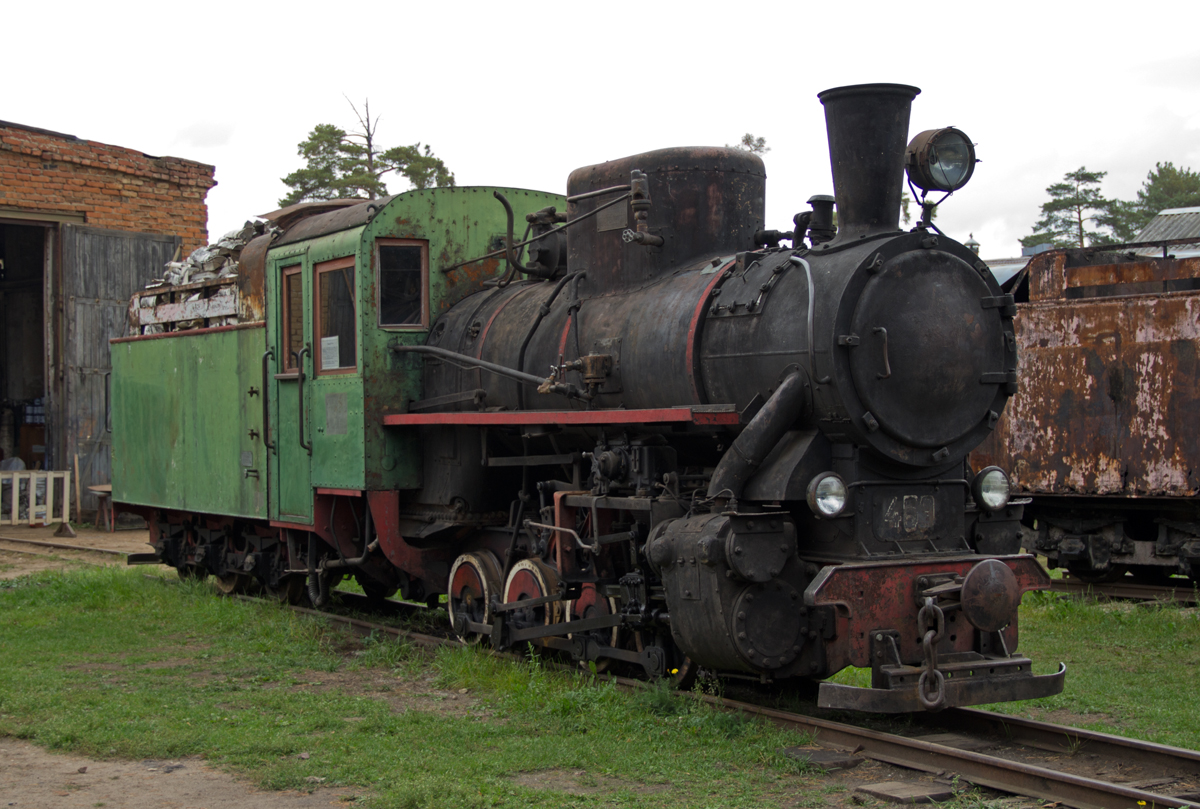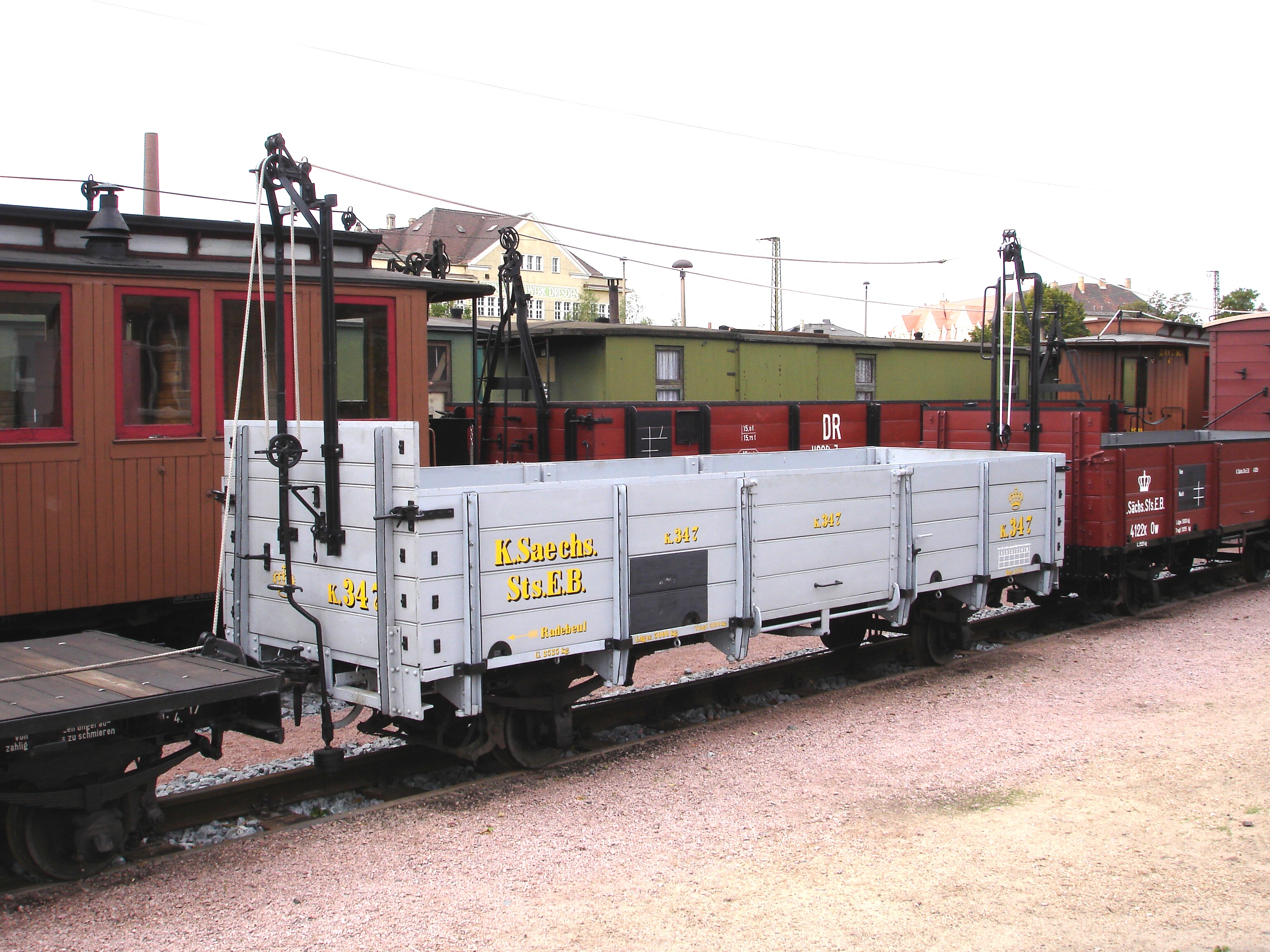|
Gusevskoye Peat Narrow Gauge Railway
The Gusevskoye peat railway is located in Vladimir Oblast, Russia. The peat railway was opened in 1920, and has a total length of which is currently operational; the track gauge is . History Gusevskoye peat railway emerged in the 1920s, in the area Gus-Khrustalny District, in a settlement named Gus-Khrustalny (town), Gus-Khrustalny in 1931 became a town. The railway had a maximum length of about at their peak. Gusevskoye railway was built for hauling peat and workers and operates year-round with several pairs of trains a day. At present only of the railway is operational, current operations include passenger traffic (workers-tourists) and freight traffic, transportation of peat. A peat briquette factory was built and put into operation in 2010 in a settlement named Gusevskiy. A peat briquette factory was built and put into operation in 2011 in a settlement named Mezinovskiy. About 2011 half of the railroad was dismantled. Formed two separate railway network. Current status ... [...More Info...] [...Related Items...] OR: [Wikipedia] [Google] [Baidu] |
Vladimir Oblast
Vladimir Oblast (russian: Влади́мирская о́бласть, ''Vladimirskaya oblast'') is a federal subjects of Russia, federal subject of Russia (an oblast). Its closest border 66 Meter, km east of central Moscow, the administrative center is the types of inhabited localities in Russia, city of Vladimir, Russia, Vladimir, which is located east of Moscow. As of the Russian Census (2010), 2010 Census, the oblast's population was 1,443,693. The UNESCO World Heritage Site, World Heritage List includes the 12th-century cathedrals of Vladimir, Russia, Vladimir, Suzdal, Bogolyubovo, Vladimir Oblast, Bogolyubovo, and Kideksha. Geography Vladimir Oblast borders Moscow Oblast, Moscow, Yaroslavl Oblast, Yaroslavl, Ivanovo Oblast, Ivanovo, Ryazan Oblast, Ryazan, and Nizhny Novgorod Oblasts. The oblast is situated in the center of the East European Plain. The Klyazma River, Klyazma and the Oka River, Oka are the most important rivers. There are approximately three hundred lake ... [...More Info...] [...Related Items...] OR: [Wikipedia] [Google] [Baidu] |
ESU2A
Esu or ESU may refer to: People * Esu Niemelä (1921–1999), Finnish politician * Ivara Esu (born 1951), Nigerian academic administrator * Ozak Esu (born 1991), Nigerian engineer ;Characters * Eshu, a Yoruba divinity Places * Essaouira-Mogador Airport, in Morocco Entertainment and fiction * Class S (genre), a Japanese genre of girl's fiction Education * East Stroudsburg University of Pennsylvania, USA * Educational Service Units of Nebraska, USA * Emporia State University in Kansas, USA Groups and organizations * European Students' Union * Emergency Service Unit, a police tactical unit * Energy Services Union, an Irish trade union * Explorer Scout Unit, of the Explorer Scouts * English-Speaking Union, an international educational charity Science and medicine * Electrostatic units, a system of units ** Electrostatic unit, or statcoulomb, its unit of charge * Evolutionarily significant unit * Electrosurgical unit, used in electrosurgery Other uses * Central Alaskan ... [...More Info...] [...Related Items...] OR: [Wikipedia] [Google] [Baidu] |
Narrow-gauge Railways In Russia
The Imperial Russian narrow railway track gauge was , the current track gauge is predominantly . In Soviet Russia, narrow-gauge railways were mostly common in forestry and peat industries in low inhabited places. Usually they have one main line and number of temporary branches. There was commonly a passenger service to villages and towns for workers. As of the mid 2010s, a number of industrial railways survive in places with bad roads, but every year some railways are closing. A government railway operator, RZD, closed all owned common 750 mm railways, but still have a number of children's railways with standard rolling stock. The most well-known narrow-gauge railways are Alapayevsk narrow-gauge railway (municipal passenger), Apsheronsk narrow-gauge railway (mountain industrial railway with passenger service), and Karinskaya narrow-gauge railway (suburban passenger private railway). Also children's railways are located in many big cities. Overview 1067mm * Sakhali ... [...More Info...] [...Related Items...] OR: [Wikipedia] [Google] [Baidu] |
Crane (railroad)
A railroad crane (North America: crane car or wrecker; UK: breakdown crane) is a type of crane used on a railroad for one of three primary purposes: freight handling in goods yards, permanent way (PW) maintenance, and accident recovery work. Although the design differs according to the type of work, the basic configuration is similar in all cases: a rotating crane body is mounted on a sturdy chassis fitted with flanged wheels. The body supports the jib (UK; North America: boom) and provides all the lifting and operating mechanisms; on larger cranes, an operator's cabin is usually provided. The chassis is fitted with buffing (UK) and/or coupling gear to allow the crane to be moved by a locomotive, although many are also self-propelled to allow limited movement about a work site. For cranes with a jib that extends beyond the length of the chassis, an idler car (also known as a 'jib carrier' (UK) or 'boom car' (North America)) is provided to protect the jib and to allow the c ... [...More Info...] [...Related Items...] OR: [Wikipedia] [Google] [Baidu] |
Hopper Car
A hopper car (US) or hopper wagon ( UIC) is a type of railroad freight car used to transport loose bulk commodities such as coal, ore, grain, and track ballast. Two main types of hopper car exist: covered hopper cars, which are equipped with a roof, and open hopper cars, which do not have a roof. This type of car is distinguished from a gondola car in that it has opening doors on the underside or on the sides to discharge its cargo. The development of the hopper car went along with the development of automated handling of such commodities, with automated loading and unloading facilities. Covered hopper cars are used for bulk cargo such as grain, sugar, and fertilizer that must be protected from exposure to the weather. Open hopper cars are used for commodities such as coal, which can suffer exposure with less detrimental effect. Hopper cars have been used by railways worldwide whenever automated cargo handling has been desired. "Ore jennies" is predominantly a term for shorter ... [...More Info...] [...Related Items...] OR: [Wikipedia] [Google] [Baidu] |
Open Wagon
Open wagons (trucks in the UK) form a large group of railway goods wagons designed primarily for the transportation of bulk goods that are not moisture-retentive and can usually be tipped, dumped or shovelled. The International Union of Railways (UIC) distinguishes between ordinary wagons (Class E/ UIC-type 5) and special wagons (F/6). Open wagons often form a significant part of a railway company's goods wagon fleet; for example, forming just under 40% of the Deutsche Bahn's total goods wagon stock in Germany. UIC standard goods wagons Since the 1960s, the majority of goods wagons procured by European railway administrations have been built to standards laid down by, or based on, those established by the UIC. In addition to open wagons the table also shows wagons with opening roofs (Class T), whose design is based on open wagons. File:El-Wagen-UIC-Bauart1-Zittau.jpg, Twin-axled UIC Type 1 open wagon, used as an ash wagon, on a transporter wagon in Zittau File:Es-Wa ... [...More Info...] [...Related Items...] OR: [Wikipedia] [Google] [Baidu] |
Passenger Car (rail)
A passenger railroad car or passenger car (United States), also called a passenger carriage, passenger coach (United Kingdom and International Union of Railways), or passenger bogie (India) is a railroad car that is designed to carry passengers. The term ''passenger car'' can also be associated with a sleeping car, a baggage car, a dining car, railway post office and prisoner transport cars. The first passenger cars were built in the early 1800s with the advent of the first railroads, and were small and little more than converted freight cars. Early passenger cars were constructed from wood; in the 1900s construction shifted to steel and later aluminum for improved strength. Passenger cars have increased greatly in size from their earliest versions, with modern bi-level passenger cars capable of carrying over 100 passengers. Amenities for passengers have also improved over time, with developments such as lighting, heating, and air conditioning added for improved passenger ... [...More Info...] [...Related Items...] OR: [Wikipedia] [Google] [Baidu] |
Snowplow
A snowplow (also snow plow, snowplough or snow plough) is a device intended for mounting on a vehicle, used for removing snow and ice from outdoor surfaces, typically those serving transportation purposes. Although this term is often used to refer to vehicles mounting such devices, more accurately they are known as winter service vehicles, especially in areas that regularly receive large amounts of snow every year, or in specific environments such as airfields. In other cases, pickup trucks and front end loaders are outfitted with attachments to fulfill this purpose. Some regions that do not frequently see snow may use graders to remove compacted snow and ice off the streets. Snowplows can also be mounted on rail cars or locomotives to clear railway tracks. Usage A snowplow works by using a blade to push snow to the side to clear it from a surface. Modern plows may include technology to make it easier to perform the work and stay on the road. These include Global Positioning ... [...More Info...] [...Related Items...] OR: [Wikipedia] [Google] [Baidu] |
Tank Car
A tank car ( International Union of Railways (UIC): tank wagon) is a type of railroad car (UIC: railway car) or rolling stock designed to transport liquid and gaseous commodities. History Timeline The following major events occurred in the years noted: *1865: Flatcars with banded wooden planks or decking mounted on top are employed for the first time to transport crude oil from the fields of Pennsylvania during the Pennsylvanian oil rush. Laurence Myers of Philadelphia invented the ''Rotary Oil Car'', as he named it. It was an improvement on a patent from 1851 of a freight car for transporting coal. The new invention patented on July 18, 1865, was for the transportation of crude oil and petroleum. It was the first appearance of an oil tank on a railroad flatcar. Three books mention his invention. *1869: Wrought iron tanks, with an approximate capacity of per car, replace wooden tanks. *1888: Tank-car manufacturers sell units directly to the oil companies, with capaciti ... [...More Info...] [...Related Items...] OR: [Wikipedia] [Google] [Baidu] |
Flatcar
A flatcar (US) (also flat car, or flatbed) is a piece of rolling stock that consists of an open, flat deck mounted on a pair of trucks (US) or bogies (UK), one at each end containing four or six wheels. Occasionally, flat cars designed to carry extra heavy or extra large loads are mounted on a pair (or rarely, more) of bogies under each end. The deck of the car can be wood or steel, and the sides of the deck can include pockets for stakes or tie-down points to secure loads. Flatcars designed for carrying machinery have sliding chain assemblies recessed in the deck. Flatcars are used for loads that are too large or cumbersome to load in enclosed cars such as boxcars. They are also often used to transport intermodal containers (shipping containers) or trailers as part of intermodal freight transport shipping. Specialized types Aircraft parts flatcars Aircraft parts were hauled via conventional freight cars beginning in World War II. However, given the ever-increasing size of ... [...More Info...] [...Related Items...] OR: [Wikipedia] [Google] [Baidu] |






